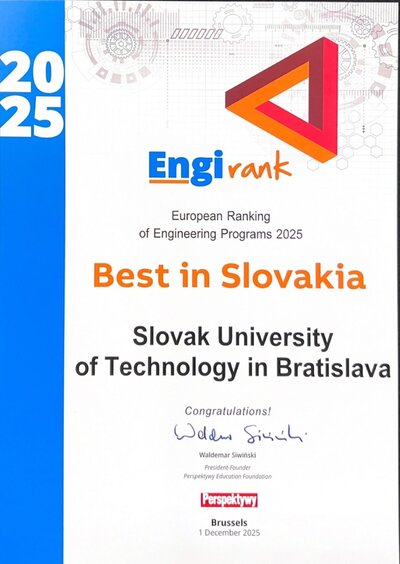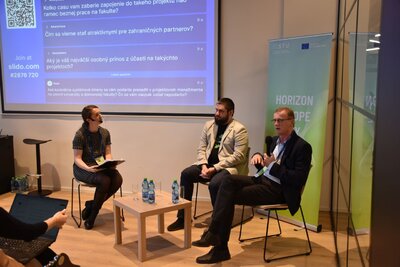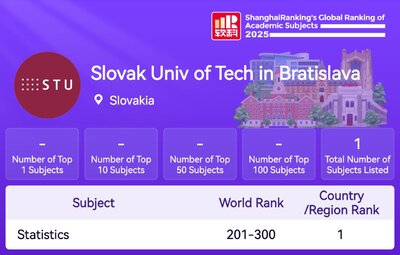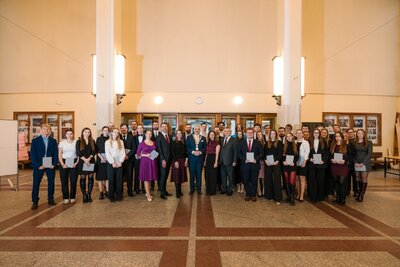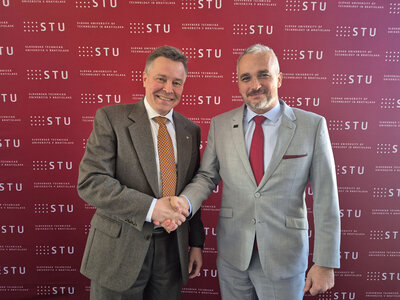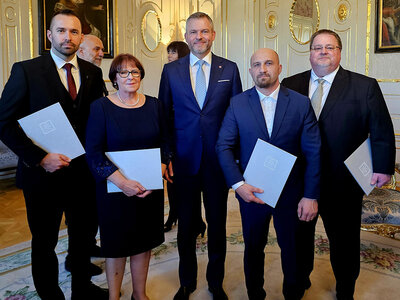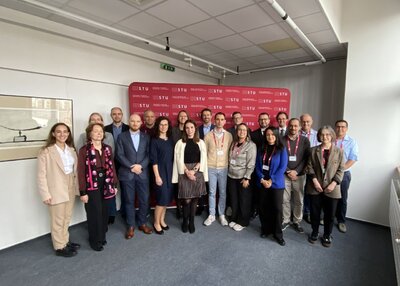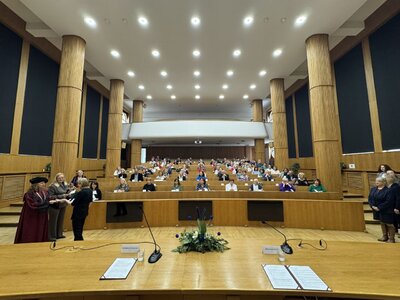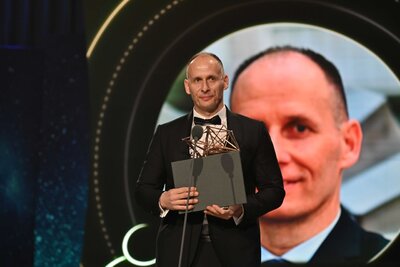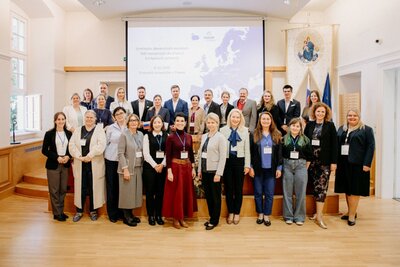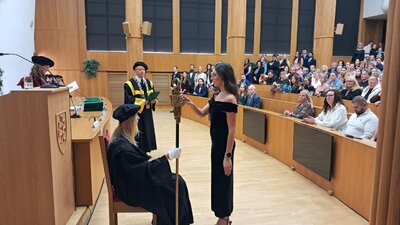Ako kodifikovať inováciu v procese učenia (sa)
Mgr. art. Zuzana Turlíková, ArtD.
zuzana.turlikova@stuba.sk
Mgr. art. Soňa Otiepková
sona.otiepkova@stuba.sk
Ústav dizajnu
Fakulta architektúry a dizajnu STU
Mgr. art. Monika Chovanec Hencová
monika.hencova@stuba.sk
Ústav interiéru a výstavníctva
Fakulta architektúry a dizajnu STU
Abstract:
"The publication focuses on profiling the challenges associated with creative thinking, interdisciplinarity, collaboration, and STEAM teaching principles. It includes methods and tools for gathering and assessing innovation challenges that arise when working with external stakeholders. The data is based on research by a European consortium of universities and reflects data collection from students, teachers, university management and external stakeholders (partners) who have been involved in the collaborations between university and external stakeholders. The publication aims to identify how the challenges of such collaborations can be identified, codified and harnessed by academics to support student leadership.
The research involved quantitative data collection through questionnaires at eight universities (the Netherlands, Germany, Italy, Iceland, Portugal, Slovakia, and Poland), which identified the advantages, disadvantages, challenges and benefits of university-practice cooperation. The emergence of innovation and the development of creative thinking during such cooperation has been investigated. The inputs were then subjected to qualitative, in-depth analysis by expert groups composed of educators, curriculum sponsors, and education experts to compile criteria for successful collaboration.
A series of recommended criteria, to be considered as a prerequisite for successful collaboration between higher education institutions and partners from practice has been identified. The publication is addressed to higher education institutions – university management, and educators, but also to external partners who have a sincere interest in building effective, innovative and socially beneficial partnerships.
DOI: 10.61544/CMGK7433
Literatúra:
Abegglen, S., Burns, T., & Sinfield, S. (2021). Editorial: Collaboration in higher education: Partnering with students, colleagues and external stakeholders. Journal of University Teaching & Learning Practice, 18(7), 1-6. https://doi. org/10.53761/1.18.7.1
Aguilera, D., & Ortiz-Revilla, J. (2021). STEM vs. STEAM education and student creativity: A systematic literature review. Education Sciences, 11(7), 331. https://doi.org/10.3390/educsci11070331
Arau Ribeiro, M. C., Silveira, C., Marcos, F. Gomes, N., Lopes, N., and Coutinho, P. (Eds.) (2024). UNLOCKING POTENTIAL: 17 literature reviews to promote creative thinking, innovation & STEAM in the classroom and in the cloud. Guarda: IMEDIALAB Laboratório de Comunicação e Media, IPG – Guarda Polytechnic University https://www.doi. org/10.46691/zmx89lsx
Bartlett, C., & Bos, L. (2018). STEAM around the world: Successfully incorporating hands-on learning and diversity into children’s programming. Journal of Library Administration, 58(2), 174–182. https://doi. org/10.1080/01930826.2017. 1392223
Colucci-Gray, L., Trowsdale, J., Cooke, C. F., Davies, R., Burnard, P., & Gray, D. S. (2017). Reviewing the potential and challenges of developing STEAM education through creative pedagogies for 21st learning: How can school curricula be broadened towards a more responsive, dynamic, and inclusive form of education? Commissioned Report for the British Educational Research Association. https://www. bera.ac.uk/promoting-educational-research/projects/reviewing-thepotential-and-challenges-of-developing-steam-education
Dong, Y., Wang, J., Yang, Y., & Kurup, P. M. (2020). Understanding intrinsic challenges to STEM instructional practices for Chinese teachers based on their beliefs and knowledge base. International Journal of STEM Education, 7(1), 47. https://doi.org/10.1186/s40594-020-00245-0
Gajda, A., Beghetto, R. A., & Karwowski, M. (2017). Exploring creative learning in the classroom: A multi-method approach. Thinking Skills and Creativity, 24, 250-267. https://doi.org/10.1016/j.tsc.2017.04.002
Hargrove, R. A., & Nietfeld, J. L. (2014). The Impact of metacognitive instruction on creative problem solving. The Journal of Experimental Education, 1–28. https://doi.org/10.1080/00220973.2013.876604
Hennessey, B. A. (2015). If I were Secretary of Education: A focus on intrinsic motivation and creativity in the classroom. Psychology of Aesthetics, Creativity, and the Arts, 9, 187–192. http://dx.doi.org/10 .1037/aca0000012
Jackson, L. A., Witt, E. A., Games, A. I., Fitzgerald, H. E., von Eye, A., & Zhao, Y. (2012). Information technology use and creativity: findings from the children and technology project. Computers in Human Behavior, 28, 2, 370–376. doi: 10.1016/j.chb.2011.10.006
Jahnke, I., Haertel, T., & Wildt, J. (2017). Teachers’ conceptions of student creativity in higher education. Innovations in Education and Teaching International, 54(1), 87-95. https://doi.org/10.1080/14703297.2015.1088396
Karunarathne, W., & Calma, A. (2024). Assessing creative thinking skills in higher education: deficits and improvements. Studies in Higher Education, 49(1), 157-177. https://doi.org/10.1080/03075079.2023.2225532
Karwowski, M., Gralewski, J., Patston, T., Cropley, D. H., & Kaufman, J. C. (2020). The creative student in the eyes of a teacher: A cross-cultural study. Thinking Skills and Creativity, 35, 100636. https://doi.org/10.1016/j. tsc.2020.100636
Margot, K. C., & Kettler, T. (2019). Teachers’ perception of STEM integration and education: a systematic literature review. International Journal of STEM Education, 6(1), 2. https://doi.org/10.1186/s40594-018-0151-2
Matsuura, T., & Nakamura, D. (2021). Trends in STEM/STEAM education and students’ perceptions in Japan. Asia-Pacific Science Education, 7(1), 7–33. https://doi.org/10.1163/23641177-bja10022
Miller, R. C. (2020). Interdisciplinarity: Its Meaning and Consequences. Oxford Research Encyclopedia of International Studies. https://oxfordre.com/internationalstudies/view/10.1093/acrefore/9780190846626.001.0001/ acrefore-9780190846626-e-92
Perignat, E., & Katz-Buonincontro, J. (2019). STEAM in practice and research: An integrative literature review. Thinking Skills and Creativity, 31, 31–43. https://doi.org/10.1016/j.tsc.2018.10.002
Raento, P. (2020). Interdisciplinarity. In: Kobayashi, Audrey (editor): International Encyclopedia of Human Geography, (second edition), Elsevier, 357-363. https://doi.org/10.1016/B978-0-08-102295-5.10659-6
Robinson, K., Aronica, L. (2015). Creative schools: the grassroots revolution that’s transforming education. New York, Viking.
Runco, M. A., & Jaeger, G. J. (2012). The standard definition of creativity. Creativity Research Journal, 24(1), 92-96. https://doi.org/10.1080/10400419.2012.650092
Silvia, P. J., Christensen, A. P., & Cotter, K. N. (2016). Commentary: The development of creativity-ability, motivation, and potential. New Directions for Child and Adolescent Development, 2016, 111–119. http://dx .doi.org/10.1002/ cad.20147
The Future of Jobs (2023). World Economic Forum. ISBN-13: 978-2-940631-96-4 https://www.weforum.org/reports/the-future-ofjobs-report-2023/
Torrance, E. P. (1974). The Torrance Tests of Creative Thinking-Norms-Technical Manual Research Edition-Verbal Tests, Forms A and B- Figural Tests, Forms A and B. Princeton, NJ: Personnel Press
Walsh, C., Chappell, K., & Craft, A. (2017). A co-creativity theoretical framework to foster and evaluate the presence of wise humanising creativity in virtual learning environments (VLEs). Thinking Skills and Creativity, 24, 228-241. https://doi.org/10.1016/j.tsc.2017.01.001
Yong, C., Firdousi, S. F., Afzal, A., Florjančič, V., & Awais, M. (2022). The Influence of Internal and External Stakeholder Mechanisms on Entrepreneurial Success: The Moderating Role of Digital Technology Adoption. Frontiers in Psychology, 12, 821725. https://doi.org/10.3389/fpsyg.2021.821725
FURTHER READING (rozšírený okruh literatúry)
Abbas, J. (2020). HEISQUAL: A modern approach to measure service quality in higher education institutions. Studies in Educational Evaluation, 67, 100933. https://doi.org/10.1016/j.stueduc.2020.100933
Al-Samarraie, H., & Hurmuzan, S. (2018). A review of brainstorming techniques in higher education. Thinking Skills and Creativity, 27, 78-91. https://doi.org/10.1016/j.tsc.2017.12.002
Al-Zahrani, A. M. (2015). From passive to active: The impact of the flipped classroom through social learning platforms on higher education students’ creative thinking. British Journal of Educational Technology, 46(6), 1133- 1148. https://doi.org/10.1111/bjet.12353
Aleixo, A. M., Leal, S., & Azeiteiro, U. M. (2018). Conceptualization of sustainable higher education institutions, roles, barriers, and challenges for sustainability: An exploratory study in Portugal. Journal of Cleaner Production, 172, 1664-1673. https://doi.org/10.1016/j.jclepro.2016.11.010
Amaral, A., & Magalhaes, A. (2002). The emergent role of external stakeholders in European higher education governance. In I. Amaral, G. A. Jones & B. Karseth (Eds.) Governing higher education: National perspectives on institutional governance (pp. 1–21). Dordrecht: Springer. https://doi.org/10.1007/978-94-015-9946-7_1
Arau Ribeiro, M. C., Silveira, C., Marcos, F. Gomes, N., Lopes, N., Coutinho, P., and Fonseca, P. (Eds.) (2024). UNLOCKING POTENTIAL: 17 case studies to promote creative thinking, innovation & STEAM in the classroom and in the cloud. Guarda: IMEDIALAB Laboratório de Comunicação e Media, IPG - Guarda Polytechnic University. https://www.doi.org/10.46691/case789xyz
Ashman, A., & Conway, R. (1997). An introduction to cognitive education: Theory and applications. Routledge.
Awan, U., Kraslawski, A., & Huiskonen, J. (2017). Understanding the relationship between stakeholder pressure and sustainability performance in manufacturing firms in Pakistan. Procedia Manufacturing, 11, 768-777. https:// doi.org/10.1016/j.promfg.2017.07.178
Bartell, M. (2003). Internationalization of universities: A university culture-based framework. Higher Education, 45(1), 43–70. https://doi.org/10.1023/A:1021225514599
Behnamnia, N., Kamsin, A., Ismail, M. A. B., & Hayati, A. (2020). The effective components of creativity in digital game-based learning among young children: A case study. Children and Youth Services Review, 116, 105227. https://doi.org/10.1016/j.childyouth.2020.105227
Bischoff, K., Volkmann, C. K., & Audretsch, D. B. (2018). Stakeholder collaboration in entrepreneurship education: An analysis of the entrepreneurial ecosystems of European higher education institutions. Journal of Technology Transfer,43, 20–46. https://doi.org/10.1007/ s10961-017-9581-0
Branch, M., Min, D., & Anderson, M. (1999). Storytelling as a teaching-learning tool with RN students. ABNF Journal, 10(6), 131.
Buckley, P., & Lee, P. (2021). The impact of extra-curricular activity on the student experience. Active Learning in Higher Education, 22(1), 37-48. https://doi.org/10.1177/1469787418808988
Buzan, T., & Buzan, B. (1996). The mind map book: How to use radiant thinking to maximize your brain’s untapped potential. Plume, New York.
Chan, Z. C. (2013). A systematic review of creative thinking/creativity in nursing education. Nurse Education Today, 33(11), 1382-1387. https://doi.org/10.1016/j.nedt.2012.09.005
Chen, X. (2023). University-school interaction in implementing game-based learning for creative thinking development. Education and Information Technologies, 28(2), 1833-1848. https://doi.org/10.1007/s10639-022-11208-z
Diekelmann, N. (2001). Narrative pedagogy: Heideggerian hermeneutical analyses of lived experiences of students, teachers, and clinicians. Advances in Nursing Science, 23(3), 53-71.
Doppelt, Y. (2000, June). Developing pupils’ competencies through creative thinking in technological projects, Paper presented to The 28th Israel Conference on Mechanical Engineering, Ben-Gurion University of the Negev Beer-Sheva, Israel.
Duchelle, A. E., Biedenweg, K., Lucas, C., Virapongse, A., Radachowsky, J., Wojcik, D. J., ... & Kainer, K. A. (2009). Graduate students and knowledge exchange with local stakeholders: possibilities and preparation. Biotropica, 41(5), 578-585. https://doi.org/10.1111/j.1744-7429.2009.00563.x
European Commission. (2018). Erasmus+ Annual Report 2018. https://op.europa.eu/en/publication-detail/-/publication/7985705e-41b7-11ea-9099-01aa75ed71a1/language-en. Accessed 20 December 2020.
Filho, W. L. (2011). About the role of universities and their contribution to sustainable development. Higher Education Policy, 24, 427-438. https://doi.org/10.1057/hep.2011.16
Freeman, R. E. (1984). Strategic management: A stakeholder approach. Boston: Pitman.
Freeman, R. E. (2010). Strategic management: A stakeholder approach. Cambridge: Cambridge University Press.
Ge, X., Ifenthaler, D., & Spector, J. (2015). Moving forward with STEAM education research. In X. Ge, D. Ifenthaler, & J. Spector (Eds.), Emerging technologies for STEAM education. Educational communications and technology: Issues and innovations (pp. 383–396). Springer. https://doi. org/10.1007/978-3-319-02573-5_20
Goldschmid, B., & Goldschmid, M. L. (1976). Peer teaching in higher education: A review. Higher Education, 5(1), 9-33. https://doi.org/10.1007/BF01677204
Goldschmidt, G. (2016). Linkographic evidence for concurrent divergent and convergent thinking in creative design. Creativity Research Journal, 28(2), 115-122. https://doi.org/10.1080/10400419.2016.1162497
Gregory, E., Hardiman, M., Yarmolinskaya, J., Rinne, L., & Limb, C. (2013). Building creative thinking in the classroom: From research to practice. International Journal of Educational Research, 62, 43-50. https://doi. org/10.1016/j.ijer.2013.06.003
Halász, G., & Michel, A. (2011). Key Competences in Europe: interpretation, policy formulation and implementation. European Journal of Education, 46(3), 289-306. https://doi.org/10.1111/j.1465-3435.2011.01491.x
Hartmann, A., & Linn, J. F. Scaling Up: A Path to Effective Development. 2020 Focus Brief on the World’s Poor and Hungry People. International Food Policy Research Institute (IFPRI), Washington, DC.
Jankowska, M., & Atlay, M. (2008). Use of creative space in enhancing students’ engagement. Innovations in Education and Teaching International, 45(3), 271-279. https://doi.org/10.1080/14703290802176162
Joanneum Research (2001) (Ed.). Benchmarking industry–science relations—The Role of Framework Conditions. Vienna: Joanneum Research, Austria.
Jongbloed, B., Enders, J., & Salerno, C. (2008). Higher education and its communities: Interconnections, interdependencies and a research agenda. Higher Education, 56, 303-324. https://doi.org/10.1007/s10734-008-9128-2
Karwowski, M., & Soszynski, M. (2008). How to develop creative imagination?: Assumptions, aims and effectiveness of Role Play Training in Creativity (RPTC). Thinking Skills and Creativity, 3(2), 163-171. https://doi. org/10.1016/j.tsc.2008.07.001
Kelly, B., Fraser, E., & Welsh, T. (2013). Growing a strong STEM workforce: Strategies to meet industry talent needs. Tempe, AZ: University of Phoenix.
Kelly, P. J. (2006). The entrepreneurial self and ‘youth at-risk’: Exploring the horizons of identity in the twenty-first century. Journal of Youth Studies, 9(1), 17–32. https://doi.org/10.1080/13676260500523606
Kettunen, J. (2015). Stakeholder relationships in higher education. Tertiary Education and Management, 21, 56-65. https://doi.org/10.1080/13583883.2014.997277
Klunklin, A., Subpaiboongid, P., Keitlertnapha, P., Viseskul, N., & Turale, S. (2011). Thai nursing students’ adaption to problem-based learning: A qualitative study. Nurse Education in Practice, 11(6), 370-374. https://doi. org/10.1016/j.nepr.2011.03.011
Kościelniak, C. (2014). A consideration of the changing focus on the sustainable development in higher education in Poland. Journal of Cleaner Production, 62, 114-119. https://doi.org/10.1016/j.jclepro.2013.06.006
Kreber, C. (1998). The relationships between self-directed learning, critical thinking, and psychological type, and some implications for teaching in higher education. Studies in Higher Education, 23(1), 71-86.
Lee, Y. S. (1996). Technology transfer’and the research university: a search for the boundaries of university-industry collaboration. Research Policy, 25(6), 843-863.
Liu, G., Zhang, S., Zhang, J., Lee, C., Wang, Y., & Brownell, M. (2013). Autonomous motivation and Chinese adolescents’ creative thinking: The moderating role of parental involvement. Creativity Research Journal, 25(4), 446-456. https://doi.org/10.1080/10400419.2013.843401
Maelah, R., Muhammaddun Mohamed, Z., Ramli, R., & Aman, A. (2014). Internship for accounting undergraduates: comparative insights from stakeholders. Education+ Training, 56(6), 482-502. https://doi.org/10.1108/ET-09- 2012-0088
Magalhães, A., Veiga, A., & Amaral, A. (2018). The changing role of external stakeholders: from imaginary friends to effective actors or non-interfering friends. Studies in Higher Education, 43(4), 737-753. https://doi.org/10.1080/03 075079.2016.1196354
Martin, L., & Schwartz, D. L. (2014). A pragmatic perspective on visual representation and creative thinking. Visual Studies, 29, 1, 80–93. https://doi.org/10.1080/1472586x.2014.862997.
Matlay, H. (2009). Entrepreneurship education in the UK: A critical analysis of stakeholder involvement and expectations. Journal of Small Business and Enterprise Development,16(2), 355–368. https://doi. org/10.1108/14626000910956100
Mejias, S., Thompson, N., Sedas, R. M., Rosin, M., Soep, E., Peppler, K., ... & Bevan, B. (2021). The trouble with STEAM and why we use it anyway. Science Education, 105(2), 209-231. https://doi.org/10.1002/sce.21605
McWilliam, E., & Haukka, S. (2008). Educating the creative workforce: New directions for twenty-first century schooling. British Educational Research Journal, 34(5), 651-666. https://doi.org/10.1080/01411920802224204
Milgram, R. M., & Rabkin, L. (1980). A developmental test of Mednick’s associative hierarchies of original thinking. Developmental Psychology, 16, 157–158.
Miller, A. L., & Dumford, A. D. (2016). Creative cognitive processes in higher education. The Journal of Creative Behavior, 50(4), 282-293. https://doi.org/10.1002/jocb.77
Miller-Grandvaux, Y., Welmond, M., & Wolf, J. (2002). Evolving partnerships: The role of NGOs in basic education in Africa. United States Agency for International Development (USAID), Washington, DC.
Mitlin, D., Hickey, S., & Bebbington, A. (2007). Reclaiming development? NGOs and the challenge of alternatives. World Development, 35(10), 1699-1720.
Mueller, A., Johnston, M., & Bligh, D. (2010). Joining mind mapping and care planning to enhance student critical thinking and achieve holistic nursing care. International Journal of Nursing Terminologies & Classifications, 13(1), 24-27. doi: 10.1111/j.1744-618X.2002. tb00161.x
Mullen, B., Johnson, C., & Salas, E. (1991). Productivity loss in brainstorming groups: A meta-analytic integration. Basic and Applied Social Psychology, 12(1), 3-23. https://doi.org/10.1207/s15324834basp1201_1
National Art Education Association [NAEA]. (2016). Using art education to build a stronger workforce. Available from: https://arteducators-prod. s3.amazonaws.com/documents/535/ff8bfae5-6b4f-4352-b900- 4fc1182ad2b1. pdf?1455134278
Neuman, L. H., Pardue, K. T., Grady, J. L., Gray, M. T., Hobbins, B., Edelstein, J., & Herrman, J. W. (2009). What does an innovative teaching assignment strategy mean to nursing students?. Nursing Education Perspectives, 30(3), 159-163.
O’Connor, H., & Bodicoat, M. (2017). Exploitation or opportunity? Student perceptions of internships in enhancing employability skills. British Journal of Sociology of Education, 38(4), 435-449. https://doi.org/10.1080/01425692.2 015.1113855
OECD. 2022. “PISA 2021 Creative Thinking Framework.” Accessed February 16, 2023. https://www.oecd.org/pisa/ publications/PISA-2021-Creative-Thinking-Framework.pdf.
Oinonen, E. (2018). Under pressure to become – From a student to entrepreneurial self. Journal of Youth Studies, 21(10), 1344–1360. https://doi.org/10.1080/13676261.2018.1468022
Oliva, E. J. D. (2009). La gestión de la universidad como elemento básico del sistema universitario: una reflexión desde la perspectiva de los stakeholders. Innovar. Revista de Ciencias Administrativas y Sociales, (1), 25–41.
Olszewski-Kubilius, P., & Lee, S. Y. (2004). The role of participation in in-school and outside-of-school activities in the talent development of gifted students. Journal of Secondary Gifted Education, 15(3), 107-123. https://doi. org/10.4219/jsge-2004-454
Pepper, D. (2011). Assessing key competences across the curriculum—and Europe. European Journal of Education, 46(3), 335-353. https://doi.org/10.1111/j.1465-3435.2011.01484.x
Porter, A. L., Portillo, E. C., Gallimore, C. E., Zorek, J. A., & Barnett, S. G. (2020). Let external stakeholders be your guide to curricular revision. American Journal of Pharmaceutical Education, 84(8), ajpe8021. https://doi.org/10.5688/ajpe8021
Pretz, J. E., & McCollum, V. A. (2014). Self-perceptions of creativity do not always reflect actual creative performance. Psychology of Aesthetics, Creativity, and the Arts, 8(2), 227. https://doi.org/10.1037/a0035597
Quigley, C. F., Herro, D., & Jamil, F. M. (2017). Developing a conceptual model of STEAM teaching practices. School Science and Mathematics, 117(1–2), 1–12. https://doi.org/10.1111/ssm.12201
Ramaswamy, S., Harris, I., & Tschirner, U. (2001). Student peer teaching: An innovative approach to instruction in science and engineering education. Journal of Science Education and Technology, 10, 165-171.
Ranga, M., Perälampi, J., & Kansikas, J. (2016). The new face of university–business cooperation in Finland. Science and Public Policy, 43(5), 601-612. https://doi.org/10.1093/scipol/scw044
Recchi, E. (2015). Mobile Europe: The theory and practice of free movement in the EU. Springer.
Sampaio, R. M., & Laniado, R. N. (2009). Uma experiência de mudança da gestão universitária: o percurso ambivalente entre proposições e realizações. Revista de Administração Pública, 43, 151–174.
Schacter, J., Thum, Y. M., & Zifkin, D. (2006). How much does creative teaching enhance elementary school students’ achievement? The Journal of Creative Behavior, 40(1), 47-72. https://doi.org/10.1002/j.2162-6057.2006. tb01266.x
Scott, G. M., Leritz, L.E., & Mumford, M.D. (2004). The effectiveness of creativity training: A meta-analysis. Creativity Research Journal, 16, 361–388. https://doi.org/10.1080/10400410409534549
Siegel, D. S., & Wright, M. (2015). University technology transfer offices, licensing, start-ups. In Chicago handbook of university technology transfer and academic entrepreneurship. Chicago, IL: The University of Chicago Press.
Siew, N. M., & Ambo, N. (2018). Development and Evaluation of an Integrated Project-Based and STEM Teaching and Learning Module on Enhancing Scientific Creativity among Fifth Graders. Journal of Baltic Science Education, 17(6), 1017-1033.
Silen, C., & Uhlin, L. (2008). Self-directed learning–a learning issue for students and faculty!. Teaching in Higher Education, 13(4), 461-475. https://doi.org/10.1080/13562510802169756
Snyder, H. T., Hammond, J. A., Grohman, M. G., & Katz-Buonincontro, J. (2019). Creativity measurement in undergraduate students from 1984–2013: A systematic review. Psychology of Aesthetics, Creativity, and the Arts, 13(2), 133. https://doi.org/10.1037/aca0000228
Steghöfer, J. P., Burden, H., Hebig, R., Calikli, G., Feldt, R., Hammouda, I., ... & Liebel, G. (2018). Involving external stakeholders in project courses. ACM Transactions on Computing Education (TOCE), 18(2), 1-32.
Su, Y. S., Shao, M., & Zhao, L. (2022). Effect of mind mapping on creative thinking of children in scratch visual programming education. Journal of Educational Computing Research, 60(4), 906-929. https://doi.org/10.1177/07356331211053383
Sucozhanay, D., Santos, E., Witte, K. D., & Euwema, M. (2016). A stakeholder management approach for university change: A case study in Latin America. INTED2016 proceedings.
Tang, M., & Werner, C. H. (2017). An interdisciplinary and intercultural approach to creativity and innovation: Evaluation of the EMCI ERASMUS intensive program. Thinking Skills and Creativity, 24, 268-278. https://doi.org/10.1016/j.tsc.2017.04.001
Uvin, P., Jain, P. S., & Brown, L. D. (2000). Think large and act small: Toward a new paradigm for NGO scaling up. World Development, 28(8), 1409-1419.
Waas, T., Verbruggen, A., & Wright, T. (2010). University research for sustainable development: definition and characteristics explored. Journal of Cleaner Production, 18(7), 629-636. https://doi.org/10.1016/j.jclepro.2009.09.017
Walden, J. (2016). Industry and education need to work together to train the next generation of supply chain workers. Trade Ready. Available from: http://www.tradeready.ca/2016/trade-takeaways/industry-education-need-work-together-train-next-generation-supply-chain-workers/ [last accessed 23 January 2025].
Wallach, M. A., & Kogan, N. (1965). Modes of thinking in young children. Holt. Rinehart & Winston, New York, NY.
Wyse, D., & Ferrari, A. (2015). Creativity and education: Comparing the national curricula of the states of the European Union and the United Kingdom. British Educational Research Journal, 41(1), 30-47. https://doi.org/10.1002/ berj.3135
Xu, F. A. N. G. Q. I., McDonnell, G., & Nash, W. R. (2005). A survey of creativity courses at universities in principal countries. The Journal of Creative Behavior, 39(2), 75-88. https://doi.org/10.1002/j.2162-6057.2005.tb01251.x
Yang, X., Zhang, M., Zhao, Y., Wang, Q., & Hong, J. C. (2022). Relationship between creative thinking and experimental design thinking in science education: Independent or related. Thinking Skills and Creativity, 46, 101183. https://doi.org/10.1016/j.tsc.2022.101183
Yang, Y. T. C., Chen, Y. C., & Hung, H. T. (2022b). Digital storytelling as an interdisciplinary project to improve students’ English speaking and creative thinking. Computer Assisted Language Learning, 35(4), 840-862. https://doi.org/10.1080/09588221.2020.1750431
Yuan, Y. H., Wu, M. H., Hu, M. L., & Lin, I. C. (2019). Teacher’s encouragement on creativity, intrinsic motivation, and creativity: The mediating role of creative process engagement. The Journal of Creative Behavior, 53(3), 312-324. https://doi.org/10.1002/jocb.181

